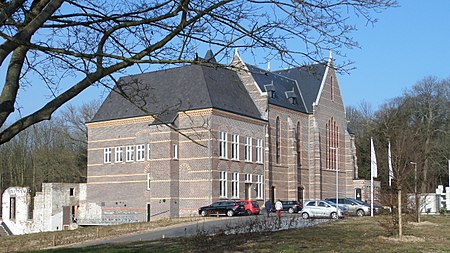Abshoven
Former Christian monasteries in the NetherlandsPages with Dutch IPAPages with non-numeric formatnum argumentsPopulated places in Limburg (Netherlands)Sittard-Geleen

Abshoven (Dutch pronunciation: [ˈɑpsˌɦoː.və(n)]; Limburgish: Abshaove) is a hamlet in the municipality of Sittard-Geleen in the province of Limburg in the Netherlands. It is located to the south of Munstergeleen and to the east of Geleen. The hamlet has approximately forty houses and is located on the Abshoven and Beekstraat roads. The hamlet is dominated by the remains of the Abshoven monastery.
Excerpt from the Wikipedia article Abshoven (License: CC BY-SA 3.0, Authors, Images).Abshoven
Daniken, Sittard-Geleen
Geographical coordinates (GPS) Address Nearby Places Show on map
Geographical coordinates (GPS)
| Latitude | Longitude |
|---|---|
| N 50.966666666667 ° | E 5.85 ° |
Address
Daniken
Daniken
6166 CC Sittard-Geleen
Limburg, Netherlands
Open on Google Maps









